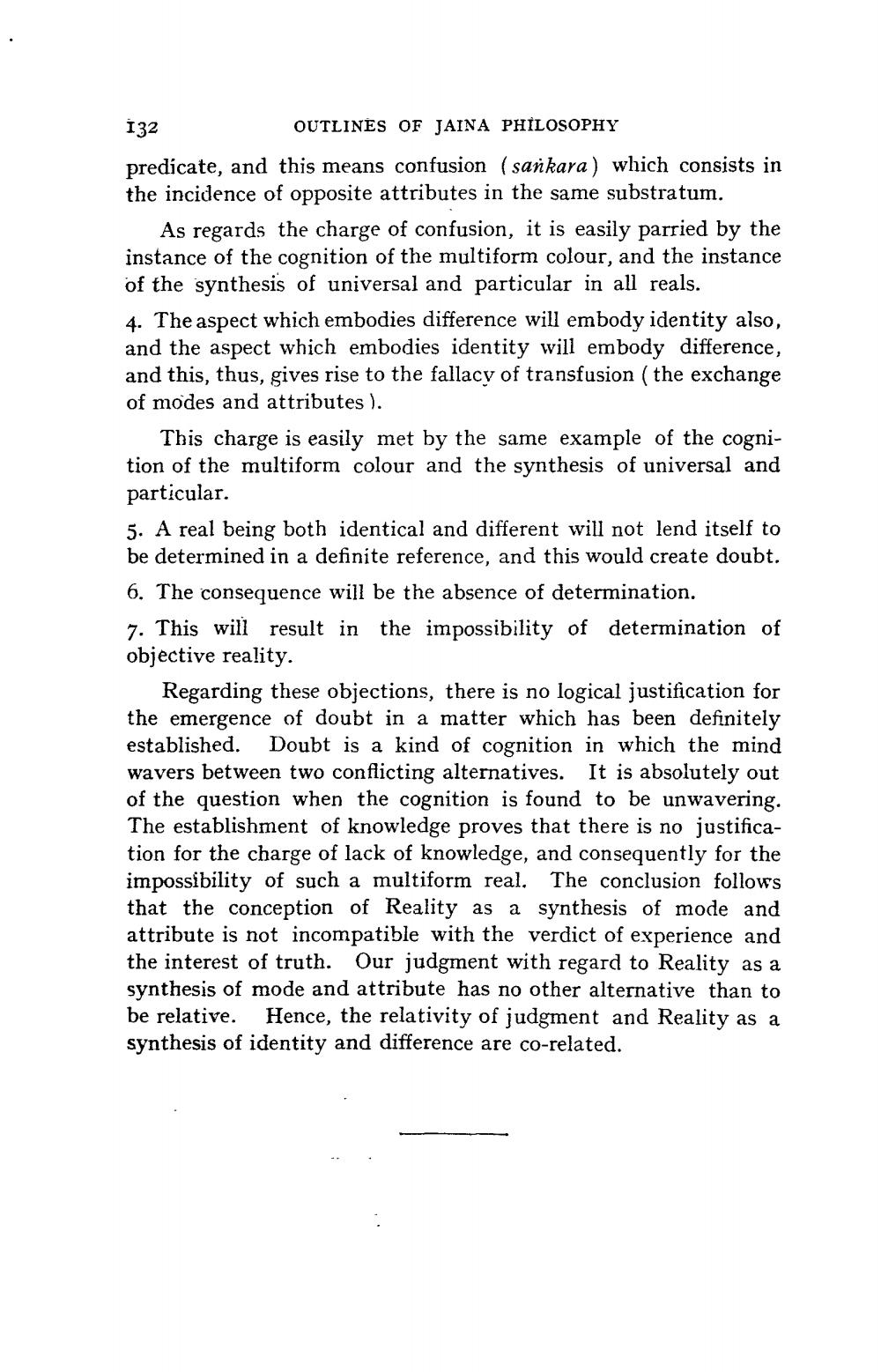________________
132
OUTLINES OF JAINA PHILOSOPHY
predicate, and this means confusion ( sankara) which consists in the incidence of opposite attributes in the same substratum.
As regards the charge of confusion, it is easily parried by the instance of the cognition of the multiform colour, and the instance of the synthesis of universal and particular in all reals. 4. The aspect which embodies difference will embody identity also, and the aspect which embodies identity will embody difference, and this, thus, gives rise to the fallacy of transfusion (the exchange of modes and attributes ).
This charge is easily met by the same example of the cognition of the multiform colour and the synthesis of universal and particular. 5. A real being both identical and different will not lend itself to be determined in a definite reference, and this would create doubt. 6. The consequence will be the absence of determination. 7. This will result in the impossibility of determination of objective reality.
Regarding these objections, there is no logical justification for the emergence of doubt in a matter which has been definitely established. Doubt is a kind of cognition in which the mind wavers between two conflicting alternatives. It is absolutely out of the question when the cognition is found to be unwavering. The establishment of knowledge proves that there is no justification for the charge of lack of knowledge, and consequently for the impossibility of such a multiform real. The conclusion follows that the conception of Reality as a synthesis of mode and attribute is not incompatible with the verdict of experience and the interest of truth. Our judgment with regard to Reality as a synthesis of mode and attribute has no other alternative than to be relative. Hence, the relativity of judgment and Reality as a synthesis of identity and difference are co-related.




